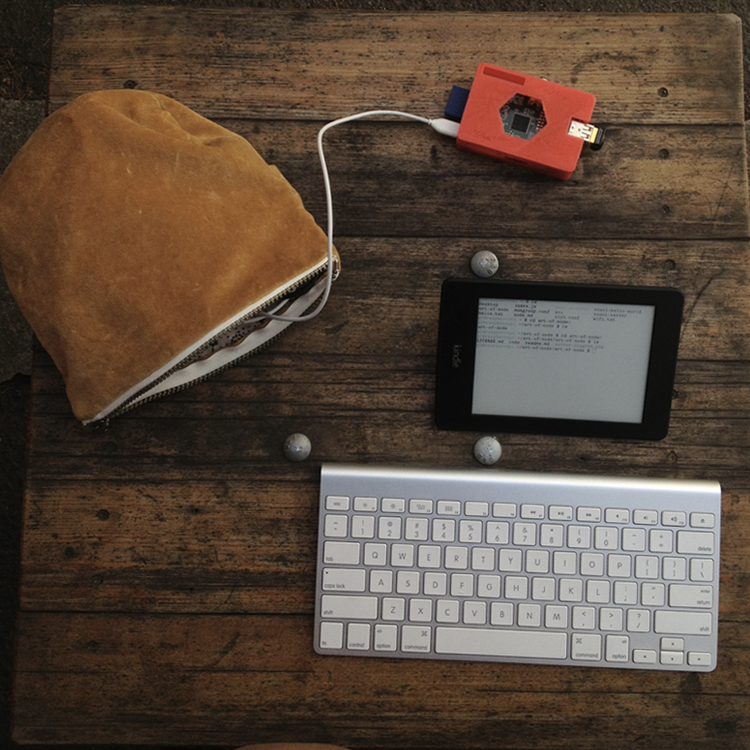| Did you get a nice shiny new Paperwhite Kindle to replace your old one? (I haven’t yet. I’m waiting until the inevitable moment when I drop my Kindle Touch and break the screen; I’m currently on my third.) If you did, you might be interested to learn that when you’re not using it to read books or jailbreaking it so you can change the wallpaper, you can use your Paperwhite as a wireless, ultra low-power display for your Raspberry Pi. We featured the original Kindleberry Pi hack from Ponnuki back in September. That hack required cables, and only worked on the old Kindle 3 (the version with the keyboard), not any later versions – plus, it looked a bit odd because to keep the screen in landscape mode you had to turn the whole assembly on its side, so the keyboard was rotated by 90 degrees. The new Kindle 5 (the Paperwhite) has no keyboard, a faster refresh rate, and a backlight that can be turned on in dark conditions. So Max Ogden has polished Ponnuki’s original Kindleberry Pi idea, and produced a really tidy piece of kit: a Raspberry Pi with a Paperwhite display, a wireless keyboard and a tiny wireless router. He says:
Here at the Foundation, we’re watching the development of e-ink products with great interest. At the moment it’s nigh-on impossible to buy an e-ink display as a consumer unless it comes bundled as part of an e-reader like a Kindle or a Nook; and that makes them very expensive. The technology has all kinds of potential for applications we want to see the Pi being used for: the low energy requirement makes an e-ink screen a perfect choice for places where you’re off the grid or reliant on solar power. We’re looking forward to seeing prices come down and displays becoming more easily available to consumers. Obviously, you’re not going to be watching video on an e-ink display any time soon; the refresh rates just aren’t there yet, and if they ever do get there, it won’t be for many years. But for everything else, e-ink’s a great choice. Max says that the Paperwhite’s refresh rate added to the tiny lag that you get using a wireless keyboard means that he sees a ~200ms screen delay when using the Kindleberry Pi, but that this is barely noticeable when typing. Max has made code and a list of required hardware available at his website.
|
A Semi-automated Technology Roundup Provided by Linebaugh Public Library IT Staff | techblog.linebaugh.org
Tuesday, April 2, 2013
Kindleberry Pi the second
Subscribe to:
Post Comments (Atom)

No comments:
Post a Comment